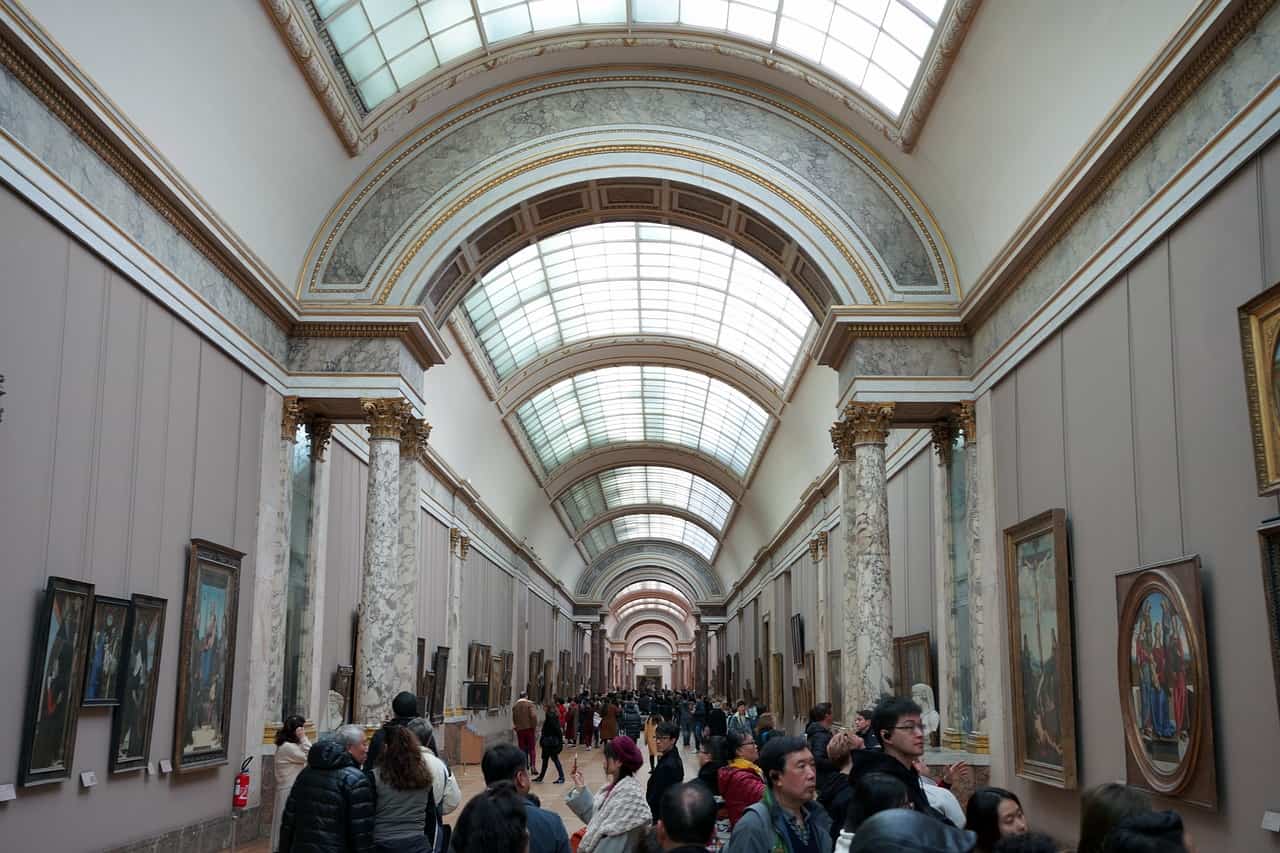Introduction to Museum Gallery Easels
Welcome to the mesmerizing art world, where creativity knows no bounds and beauty unfolds in every stroke. As you step into a museum gallery, your senses are immediately captivated by the visual feast surrounding you.
The carefully curated artworks beckon for your attention, whispering timeless stories and emotions.
This blog post will delve into the importance of museum gallery easels and their role in enhancing the artistic journey for artists, curators, and visitors alike.
The Role of Easels in Enhancing the Artistic Experience
Artists are constantly seeking ways to showcase their creativity and talent. One essential tool that plays a significant role in enhancing the artistic experience is the museum gallery easel. These sturdy stands provide more than support for displaying artwork; they contribute to creating an immersive and captivating environment.
One of the primary functions of museum gallery easels is their ability to elevate artworks, allowing viewers to engage with them at eye level. This ensures that every intricate detail and brushstroke can be observed up close, enabling a deeper appreciation for the artist’s skill and technique.
Moreover, easels offer flexibility in positioning artworks within a gallery space. By adjusting the height or angle, curators can emphasize specific aspects of each piece or create visual connections between different artworks. This adds another layer of storytelling and enhances the overall viewing experience.
Museum gallery easels also play a crucial role in protecting valuable art pieces from potential damage. Their secure design prevents accidental bumps or falls while stabilizing fragile mediums such as paintings on canvas or delicate sculptures.
Furthermore, these versatile stands allow for easy rotation and arrangement of artwork. Curators can rearrange displays periodically to keep exhibitions fresh and dynamic.
By using museum gallery easels, artists gain confidence knowing that their creations will be showcased professionally and with maximum impact. The carefully selected placement can evoke emotions or convey specific themes envisioned by the artist during creation.
Visitors benefit immensely from these carefully considered arrangements as well. Using easels creates an immersive atmosphere where art becomes tangible—inviting viewers to become part of its story rather than mere observers.
Museum gallery easels are vital in enhancing the artistic experience for artists and visitors alike. Their contribution goes beyond providing support; they add dimensionality, protect precious artwork, and facilitate storytelling through strategic placement, all while engaging viewers on a deeper level.
Types of Easels Used in Museum Galleries
When showcasing artwork in a museum gallery, the choice of easel is crucial in enhancing the overall artistic experience. Several easels are commonly used in museum galleries, each with unique features and benefits.
One popular type is the floor-standing easel, which provides stability and versatility. These easels often have adjustable height and tilt options, allowing curators to position artworks at optimal viewing angles. They are ideal for displaying larger paintings or framed pieces that need support.
Conversely, tabletop easels offer a compact and portable solution for more miniature artworks or three-dimensional objects such as sculptures or ceramics. These lightweight easels can be moved around the gallery space to create different visual arrangements.
Another type commonly found in museum galleries is wall-mounted easels. These provide a sleek and minimalist display option that saves valuable floor space while effectively showcasing artwork. Wall-mounted easels highlight individual pieces or create curated collections along gallery walls.
For more interactive exhibits or temporary installations, some museums opt for display stands or multimedia kiosks incorporating digital screens alongside traditional art displays. This innovative approach allows visitors to engage with additional information about the artworks through videos, audio clips, or interactive elements.
Choosing the correct easel type depends on various factors such as available space, artwork size and weight, desired aesthetic presentation, and exhibition goals.
Factors to Consider When Choosing an Easel for Your Gallery
When it comes to selecting a suitable easel for your gallery, there are several essential factors that you should consider. First and foremost is the size and weight of the artwork you will display. Choosing an easel that can support the weight and dimensions of your pieces without compromising their stability is crucial.
Another factor to keep in mind is adjustability. Look for an easel with multiple height and tilt adjustments, allowing you to showcase your artwork at various angles. This flexibility lets visitors view the art from different perspectives, enhancing their overall experience.
Durability is also a key consideration when choosing an easel for your gallery. You want a sturdy, long-lasting option that can withstand frequent use and handling. Opting for wood or aluminium materials can provide strength and longevity.
Additionally, please take into account the aesthetic appeal of the easel itself. While its primary function is to display artwork, it should also complement the overall ambience of your gallery space. Choose an easel with a design that harmonizes with your gallery’s style while letting the artwork take centre stage.
Consider practicality in terms of storage and transportation. If you frequently rotate exhibitions or participate in art fairs or events, opting for foldable or portable easels can make setup and teardown processes more efficient.
Tips for Properly Displaying Artworks Using Easels
When displaying artworks in museum galleries, using easels is crucial. Not only do they provide stable support for the painting, but they also enhance its visual impact and uniquely engage visitors.
Here are some tips for adequately displaying artwork using easels:
1. Size Matters: Choose an easel proportional to your artwork’s size. A large painting may require a sturdy floor-standing easel, while smaller pieces can be displayed on tabletop or wall-mounted easels.
2. Stability is Key: Ensure that your chosen easel provides stability and security for the artwork. Look for features such as adjustable legs or anti-slip grips to prevent any accidents or damage.
3. Lighting Considerations: Consider the lighting conditions in your gallery space when positioning the easel. Proper lighting can significantly enhance the artwork’s visibility and overall aesthetic appeal.
4. Angle Adjustment: Experiment with different angles to find each artwork’s most visually appealing display position. Adjusting the curve can help highlight certain aspects of the piece and create depth.
5. Consistency is Key: Maintain consistency in displaying artworks throughout your gallery space using similar types or styles of easels. This creates a cohesive visual experience for visitors and allows them to focus on appreciating art rather than being distracted by varying display methods.
Benefits of Using Museum Gallery Easels for Artists, Curators, and Visitors
Museum gallery easels benefit artists, curators, and visitors alike. Let’s explore how these versatile tools enhance the artistic experience for everyone involved.
For artists, museum gallery easels provide a stable and adjustable support system that allows them to display their artwork in the best possible light. The ability to adjust the easel’s height, angle, and position ensures its work is showcased in full glory, capturing attention and impacting viewers.
Curators also benefit from using museum gallery easels as they allow for easy organization and arrangement of artworks within an exhibition space. These easels can be easily moved around or adjusted to fit different sizes or styles of art pieces. This flexibility enables curators to create visually appealing displays highlighting each artwork’s unique features while maintaining a cohesive aesthetic throughout the exhibition.
Visitors to museum galleries also reap advantages from having artworks displayed on easels. These elevated displays make it easier for viewers to appreciate fine details and intricacies in the painting without straining their necks or bending down awkwardly. By bringing art to eye level, museum gallery easels engage visitors by inviting them into a more intimate connection with each piece.
In addition to providing optimal viewing angles, museum gallery easels help protect valuable artworks from potential damage caused by direct contact with walls or other surfaces. By keeping paintings upright and secure, these sturdy supports contribute significantly towards preserving art for future generations.
Museum gallery easels are vital in enhancing the artistic experience for artists, curators, and visitors alike.
They elevate artworks both literally and figuratively by displaying them in an immersive manner that captures attention, dramatizes details, and invites more profound engagement.
Conclusion: How Museum Gallery Easels Elevate the Artistic
Museum gallery easels are vital in elevating the artistic experience for artists, curators, and visitors alike. These essential tools enhance the presentation and display of artworks, allowing them to be showcased in their full glory.
By providing a sturdy and adjustable support system, museum gallery easels ensure that artworks are displayed at the perfect angle and height. This allows viewers to appreciate the details and nuances of each piece fully. Whether a delicate watercolour painting or a large-scale sculpture, a suitable easel can make all the difference in how an artwork is perceived.
Furthermore, museum gallery easels offer flexible arrangement and organization within a space. Curators can easily rearrange pieces to create dynamic exhibitions that tell compelling narratives or highlight specific themes. This versatility adds depth and dimension to the overall artistic experience.
For artists, using museum gallery easels during exhibitions validates their work. It signifies that their creations are worthy of being displayed professionally alongside other esteemed artworks. This recognition boosts their confidence as they showcase their talent to a broader audience.
Visitors also benefit from this elevated experience with museum gallery easels. The proper display enhances engagement by drawing attention to individual works while creating an immersive atmosphere within galleries or exhibition spaces. By showcasing art on well-designed easels, museums invite visitors into conversations about aesthetics, culture, history, and more.
FAQS
1: What are the different types of museum gallery easels?
A: There are several types of easels used in museum galleries, including tripod easels, H-frame easels, and tabletop easels. Each type has its advantages and is suitable for different display purposes.
2: How do I choose a suitable easel for my gallery?
A: When choosing an easel for your gallery, consider the size and weight of the artworks you intend to display, the available space, and your budget. It’s also essential to select an easel that complements the aesthetic style of your painting.
3: Can I use a single easel to display multiple artworks?
A: Some museum gallery easels have adjustable features that allow you to display multiple artworks on a single stand. This can be particularly useful when showcasing smaller or similar-sized pieces together.
4: Are museum gallery easels beneficial for artists who want to sell artwork?
A: Absolutely! Museum-quality displays can significantly enhance the presentation of artwork and attract potential buyers. Using high-quality gallery easels creates a professional look and conveys a sense of value and importance to art collectors.
5: Do visitors appreciate seeing art displayed on museum gallery easels?
A: Yes! Visitors often associate museums with quality curation and professionalism. Seeing artwork displayed in a well-designed museum gallery Easles adds credibility to individual pieces and entire exhibitions. It elevates their experience by providing a visually appealing setting that fully allows them to appreciate each work.
It becomes clear that museum gallery Easles plays an essential role in enhancing the artistic experience for everyone involved – from artists looking to showcase their work effectively to curators aiming to create captivating exhibitions to visitors seeking inspiration through engaging visual displays. The careful selection and proper utilization of these Easles contribute significantly towards creating transformative experiences within art galleries worldwide.










